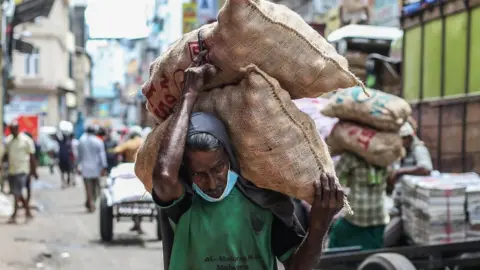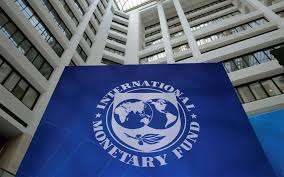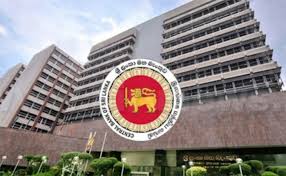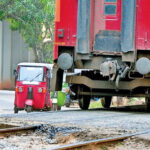
Reforms vs. Reality: Can Sri Lanka Weather the Next Economic Storm?
- CNL Reporter
- June 7, 2025
- Weekly Economic Review
- Sri Lanka
- 0 Comments
Weekly Economic Review (1ST week of June 2025)
Public Spending Soars as Capital Investment Slows
Sri Lanka’s economic outlook remains precarious, with a fragile recovery and mounting debt threatening its ability to withstand future financial shocks.
While some short-term stabilization has been achieved through international assistance, long-term resilience depends heavily on structural reforms, prudent fiscal management, and diversification of the economy.
Debt Pressures and Economic Vulnerability

The country’s public debt remains dangerously high, projected to exceed 100% of GDP by 2028. Even if Sri Lanka meets the fiscal targets set under its current International Monetary Fund (IMF) program, the burden of this debt severely limits the government’s ability to respond to new crises.
In the first four months of 2025 alone, the government spent Rs. 1.5 trillion on debt servicing—comprising Rs. 796 billion in interest payments and Rs. 352 billion on principal repayments. Alarmingly, Rs. 705 billion of this interest was for domestic borrowings.
The situation is further exacerbated by a sharply widening trade deficit. In April 2025, the trade gap surged to US $717 million—an over 80% increase from March.
Though exports rose by 10.4% year-on-year to $968 million, they dropped sharply from March’s $1.24 billion. Imports, however, grew steadily to $1.68 billion, led by dramatic increases in personal vehicle imports (707.9%), transport equipment (142.2%), and oils and fats (136.4%).
Overall, the cumulative trade deficit for the first four months of 2025 rose to $2.25 billion. Export earnings reached $4.3 billion, bolstered by gains in sectors like textiles and garments, spices, and chemical products. But import expenditure soared 12.7% year-on-year to $6.57 billion, undermining progress.
External Assistance and Reform Efforts

Sri Lanka’s economic recovery is currently supported by the IMF’s Extended Fund Facility (EFF), as well as collaboration with other international partners like the World Bank and the Asian Development Bank (ADB). These programs provide not just financial relief but also a roadmap for necessary reforms.
The government must continue to deepen reforms in key areas: fiscal consolidation, debt restructuring, improving the ease of doing business, and tackling corruption. Without addressing these structural issues, the country remains exposed to policy missteps and global market volatility.
Signs of Activity and Investor Sentiment

Despite underlying weaknesses, the Colombo Stock Exchange remains buoyant, reaching an all-time high this week with strong investor sentiment and healthy trading volumes. Foreign investors have shown renewed interest, purchasing $8.3 million worth of Sri Lankan rupee bonds.
The Central Bank has intervened in the foreign exchange market in recent days to stabilize the rupee, particularly after U.S. tariff-related news unsettled currency markets.
Meanwhile, a new law to facilitate Public-Private Partnerships (PPPs) is in the pipeline. The current National Agency for Public-Private Partnership (NAPPP) will be dissolved, and a new coordinating unit under the President’s Office will oversee PPP initiatives.
Rising Government Spending, But Capital Expenditure Slows
Sri Lanka’s tax revenues increased by 20.7% to Rs. 1,349 billion in the first four months of 2025. However, current government spending also rose by 13% to Rs. 1,603 billion—higher than the 10% pace anticipated in the budget. A significant portion of the new tax revenue is being consumed by day-to-day government expenses.

Public sector spending has surged, with salary hikes and increased hiring of graduates adding to the burden. Many public sector roles continue to absorb significant resources, including over 100,000 ‘development officers’ and other administrative posts. While some public servants like doctors and police officers add clear value, the sheer size of the state payroll remains a strain on national finances.
Conversely, capital expenditure has declined by 29% to Rs. 112.9 billion. This slowdown is largely due to a drop in foreign funding following the country’s sovereign default. Treasury officials noted that it will take time for both existing and new infrastructure projects to restart or commence, pending agreements on debt restructuring with bilateral lenders.
External Financing and Downward Revisions

As of end-April, Sri Lanka’s domestic debt stock stood at Rs. 19.3 trillion, while foreign debt was Rs. 11.2 trillion as of end-March. Treasury guarantees for foreign obligations reached Rs. 910 billion. Domestic borrowings amounted to Rs. 654 billion, while foreign borrowings stood at Rs. 128 billion—together accounting for over 20% of the annual borrowing limit of Rs. 3.8 trillion.
Meanwhile, Treasury bond issuance on a net basis hit Rs. 760 billion, though Rs. 107 billion in Treasury bills were retired. Due to economic headwinds, the government revised its GDP projection for 2025 downward from Rs. 33 trillion to Rs. 32 trillion. This revision is expected to lower both revenue and expenditure targets by around Rs. 150 billion, raising further questions about fiscal sustainability.
Additional Concerns
Other economic concerns persist. The Sri Lanka Bureau of Foreign Employment (SLBFE) faces scrutiny over alleged financial mismanagement. Sugar importers are pushing back against proposed tax hikes, warning of adverse impacts on consumers. Meanwhile, DFCC Bank has played a key role as Lead Arranger in a $100 million loan for India’s Satin Creditcare Network Ltd., reflecting continued cross-border financial engagements.
Furthermore, public procurement processes are reportedly slowing as officials hesitate to make timely decisions—a trend likely influenced by the sensitive fiscal environment and the ongoing debt restructuring efforts.
Conclusion
Sri Lanka’s economic stabilization is fragile, heavily reliant on international support and vulnerable to both domestic and external shocks. While there are some encouraging signs—such as strong stock market performance and rising tax revenues—the country’s massive debt burden, widening trade deficit, and slowing capital investment present formidable challenges. Long-term sustainability will hinge on bold structural reforms, careful fiscal planning, and restoring investor confidence through transparency and efficiency

